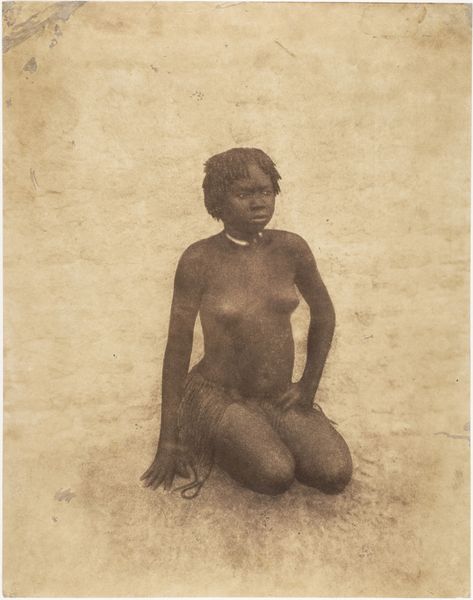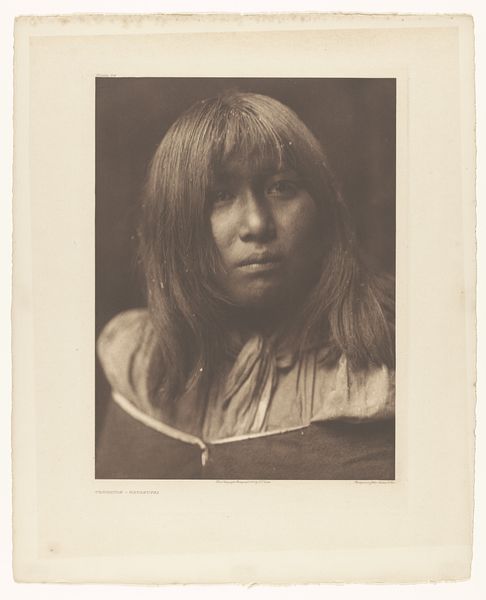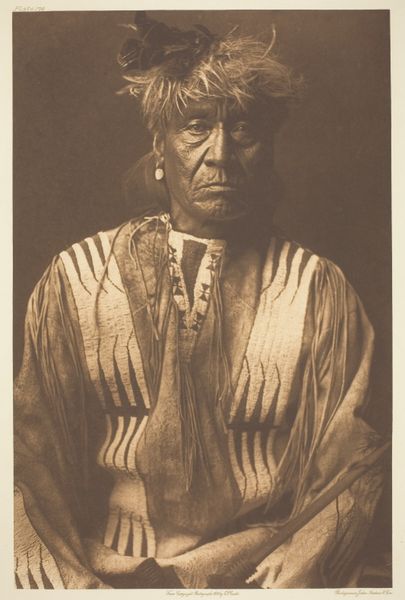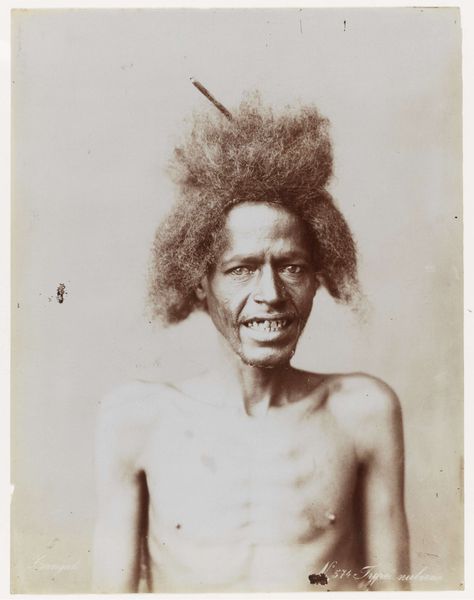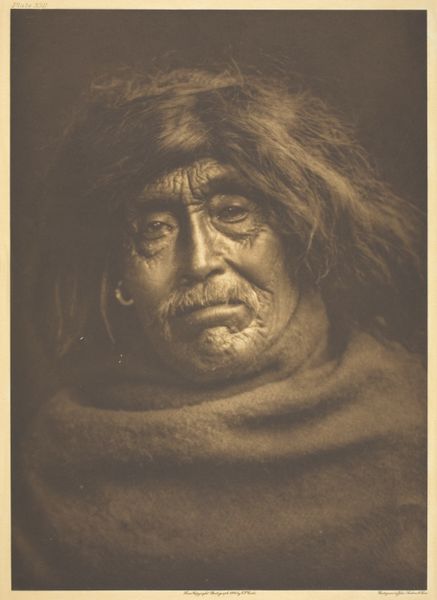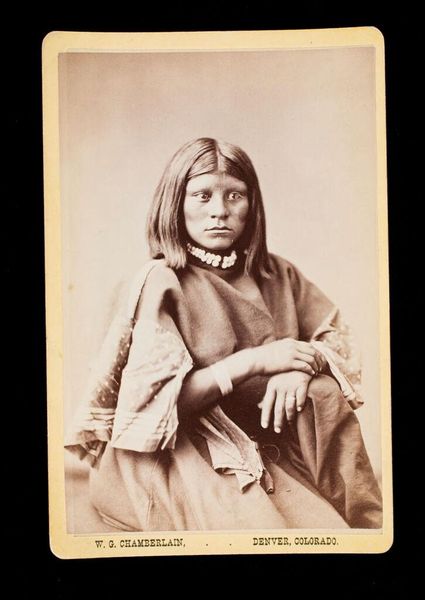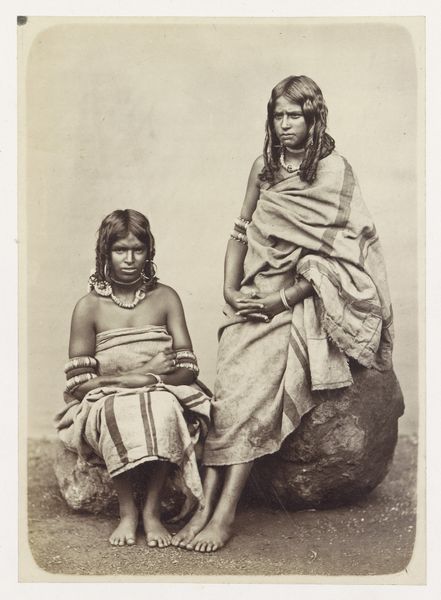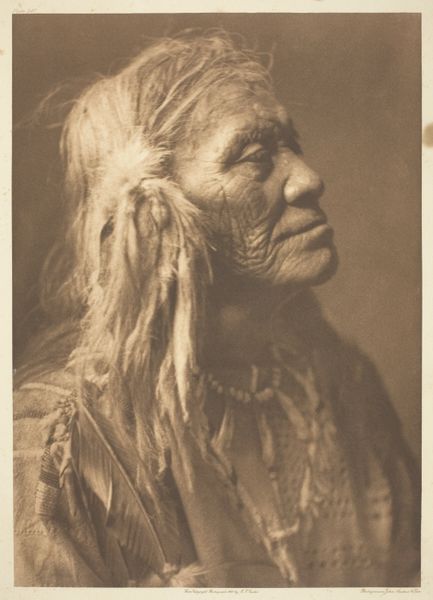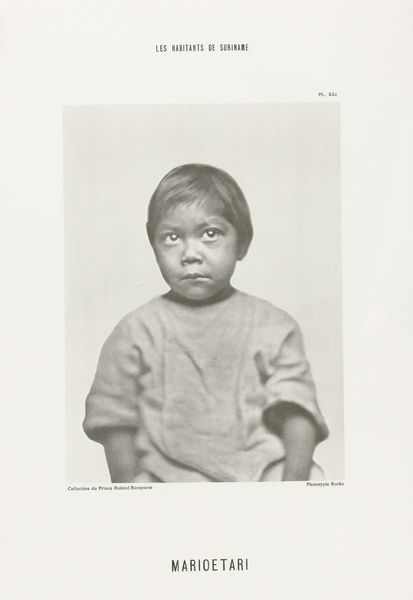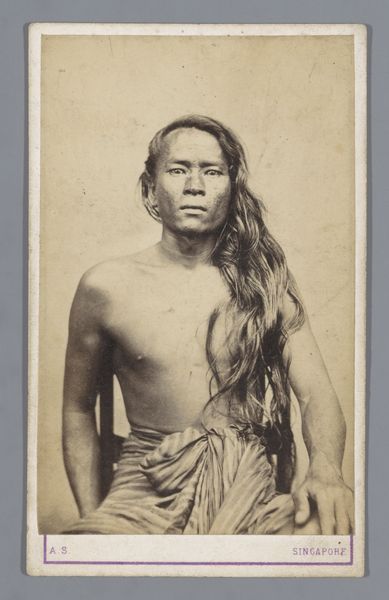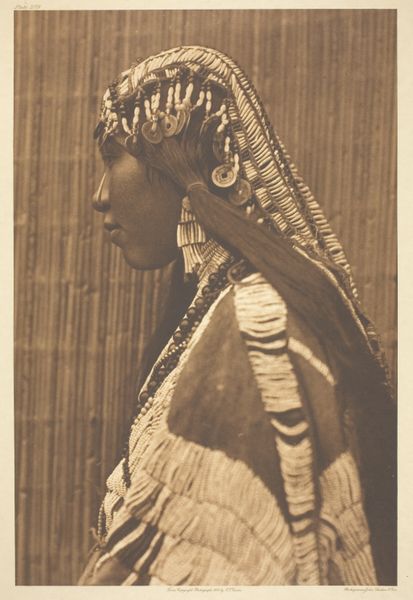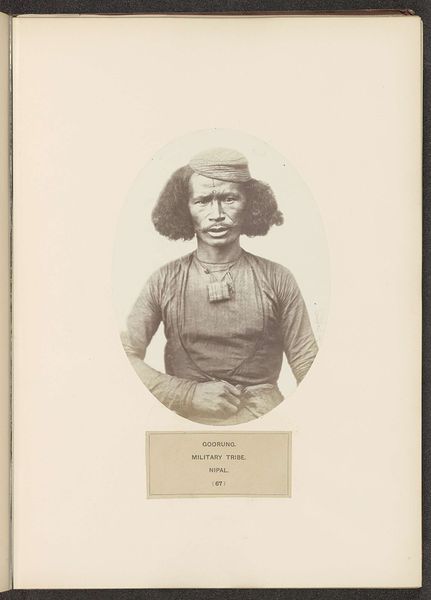
photography, gelatin-silver-print
#
portrait
#
pictorialism
#
photography
#
gelatin-silver-print
#
indigenous-americas
Dimensions: 39.5 × 30.1 cm (image/paper); 56.1 × 45.6 cm (mount)
Copyright: Public Domain
Curator: Edward S. Curtis's "Quilcene Boy," a gelatin silver print from 1912, offers a compelling window into a specific moment in the history of Indigenous representation. The work now resides at The Art Institute of Chicago. What strikes you when you look at this portrait? Editor: It's immediately haunting. The sepia tone, the direct gaze—there's a weight here. It feels very posed, intentional... almost theatrical. The soft focus gives it this dreamy, ethereal quality that, juxtaposed with the subject's intense stare, is rather jarring. Curator: Absolutely. Curtis was deeply influenced by Pictorialism, which prioritized artistic effect over documentary accuracy. He often staged his photographs, which has generated significant debate regarding their authenticity and impact on cultural narratives. Considering the power dynamics inherent in early 20th-century representation of Indigenous people, this work participates in larger discourses on race, colonialism, and visual sovereignty. Editor: That tension—the artifice versus the "truth" of the subject—is palpable. I mean, those braids are meticulously arranged, almost ornamental. It makes you wonder what the sitter felt. There's defiance there, perhaps, but also maybe...resignation? It’s easy to read into it through a contemporary lens, assigning emotions based on what we know of history. Curator: Exactly. This portrait needs to be understood in the context of Curtis’s broader project, *The North American Indian*, a massive undertaking aimed at documenting what he perceived as a vanishing race. However, the project has faced strong critique for perpetuating romanticized and often inaccurate representations. Curtis himself wasn't from an Indigenous background and faced scrutiny as an outsider who greatly influenced societal understandings. Editor: Right, the whole "noble savage" trope. But even knowing the context, I can't help but find a certain beauty in it. A sorrowful beauty, yes, born of manipulation and power imbalance, but still... beauty. The textures are exquisite, the light almost otherworldly. It lingers in your mind, prompting questions, however uncomfortable they may be. Curator: Ultimately, "Quilcene Boy" is a powerful visual artifact precisely because of its complexities and contradictions. It encourages critical reflection about the historical and ongoing representation of Indigenous peoples. Editor: It certainly does. I find myself caught between aesthetic appreciation and an almost visceral sense of unease, which, I think, is where real dialogue begins. It stays with you and gets you thinking beyond the art space.
Comments
No comments
Be the first to comment and join the conversation on the ultimate creative platform.
